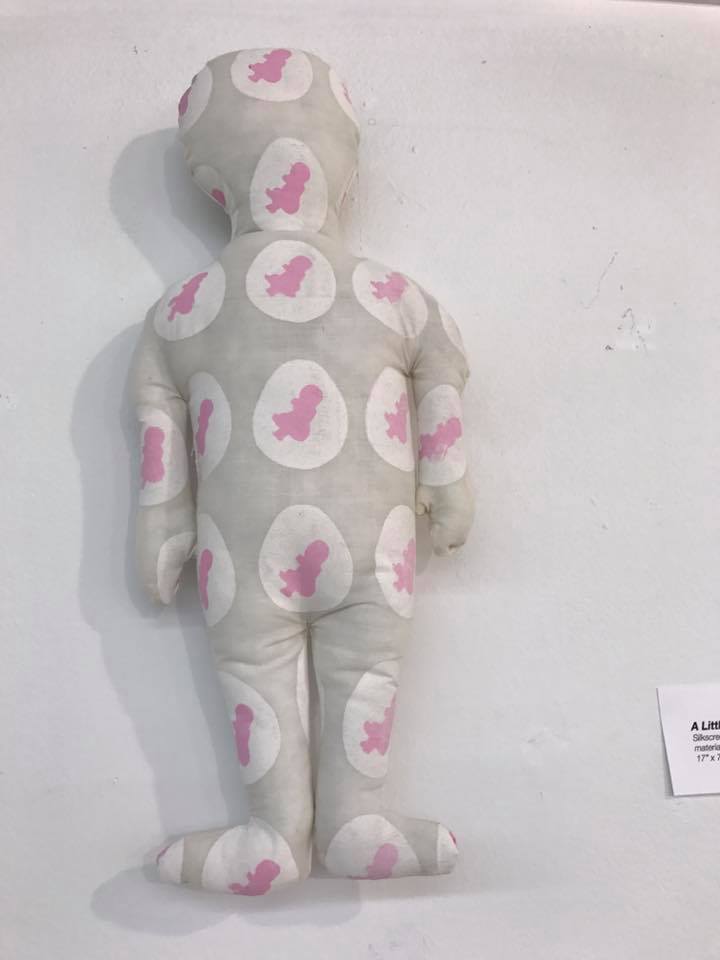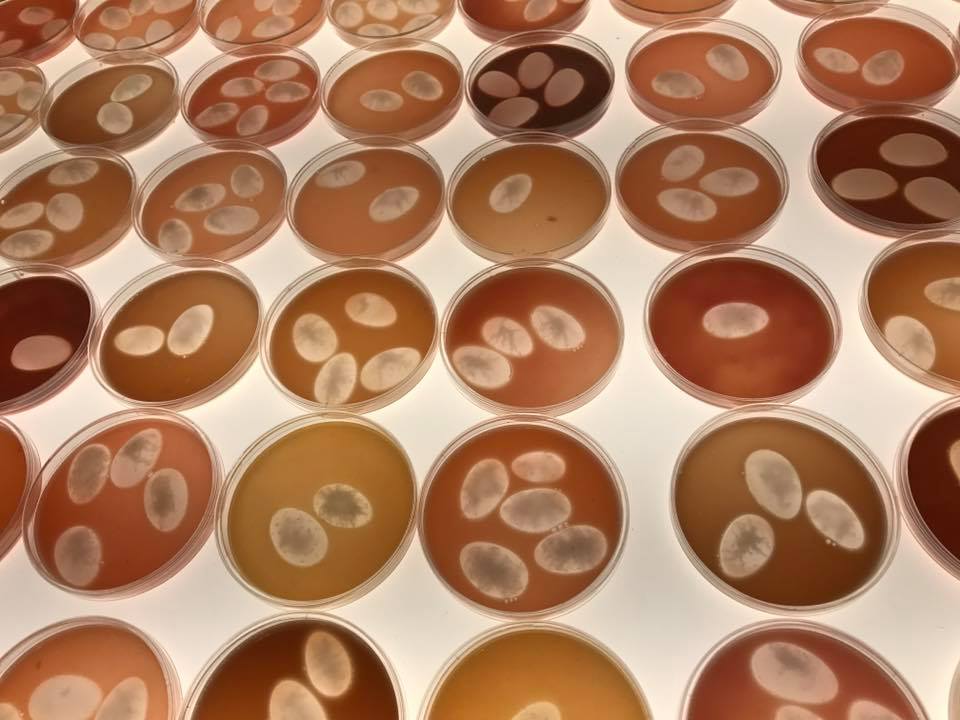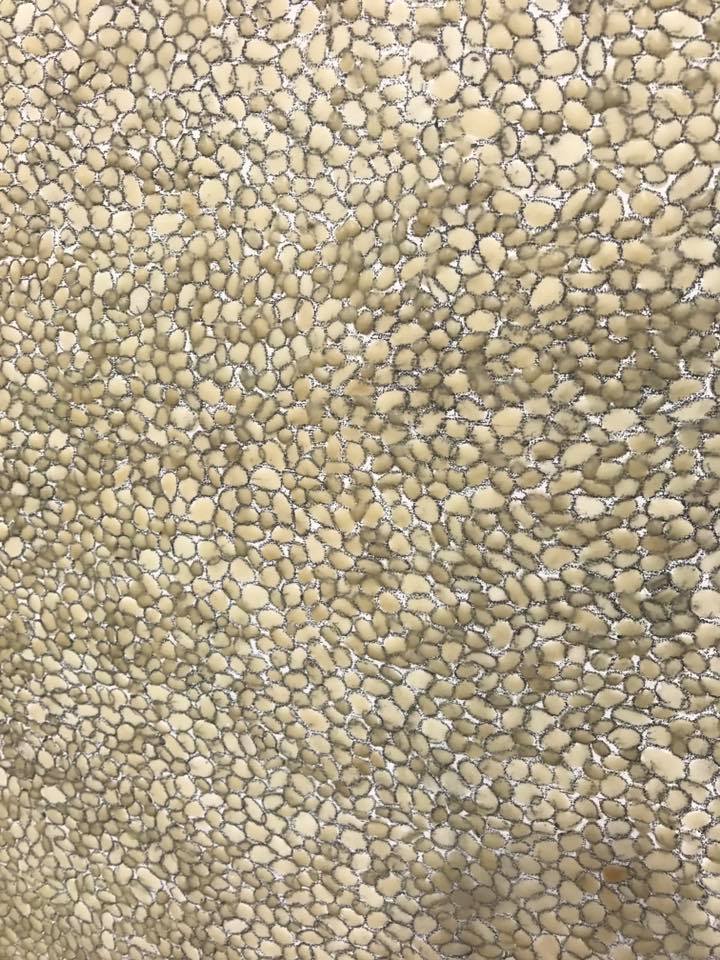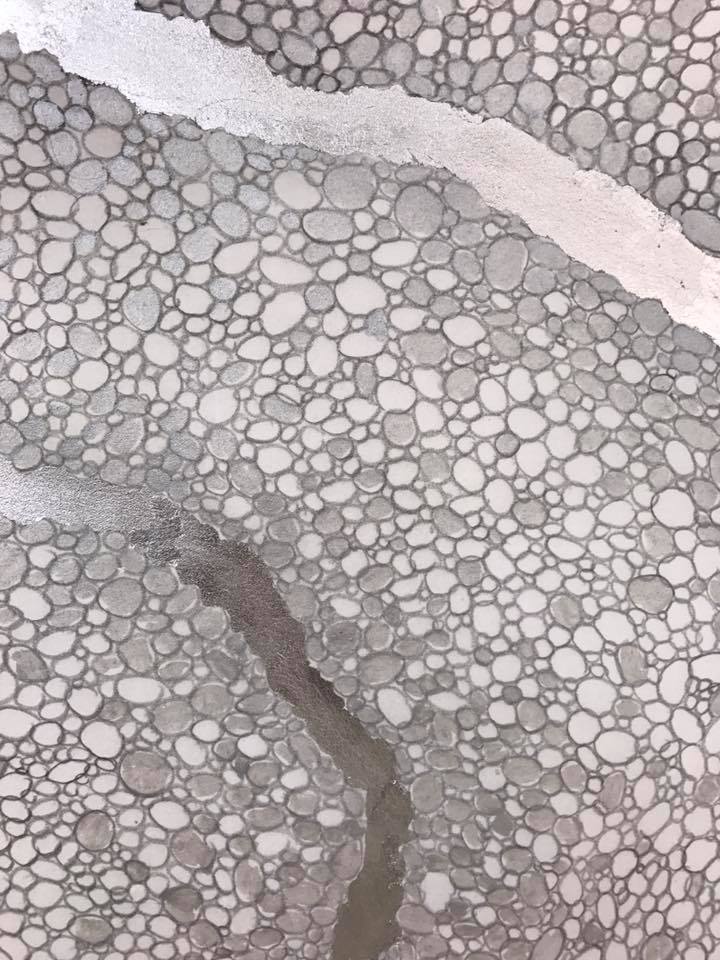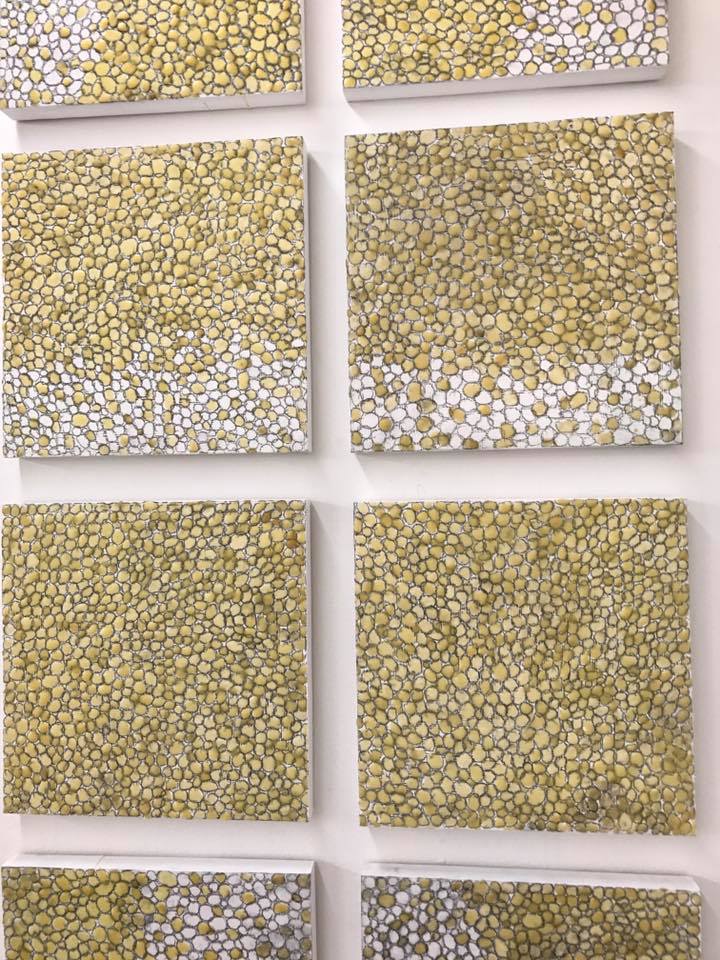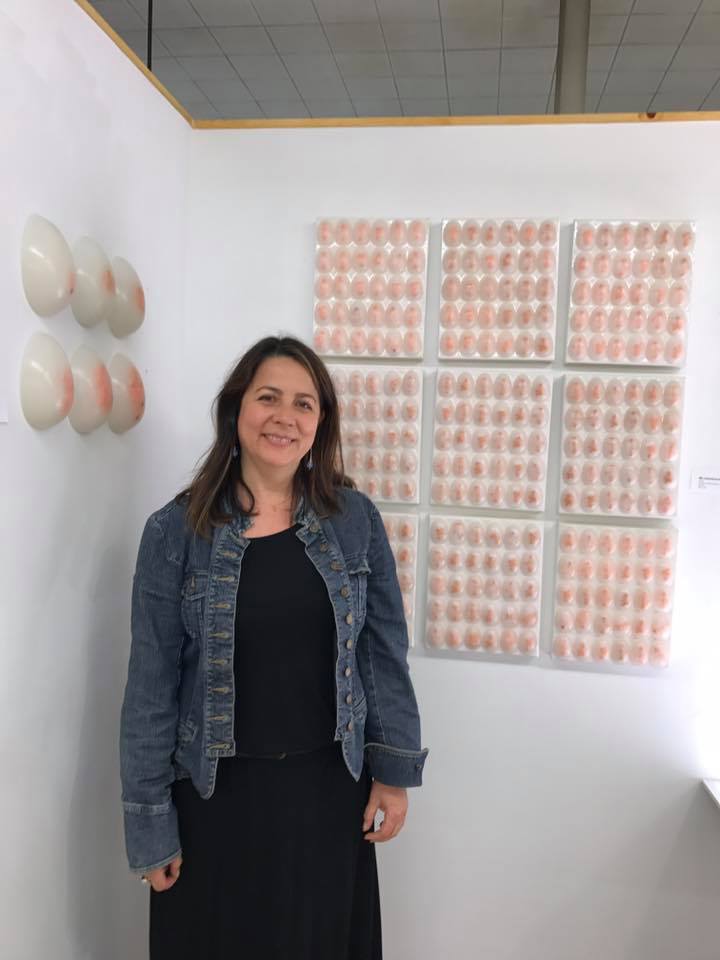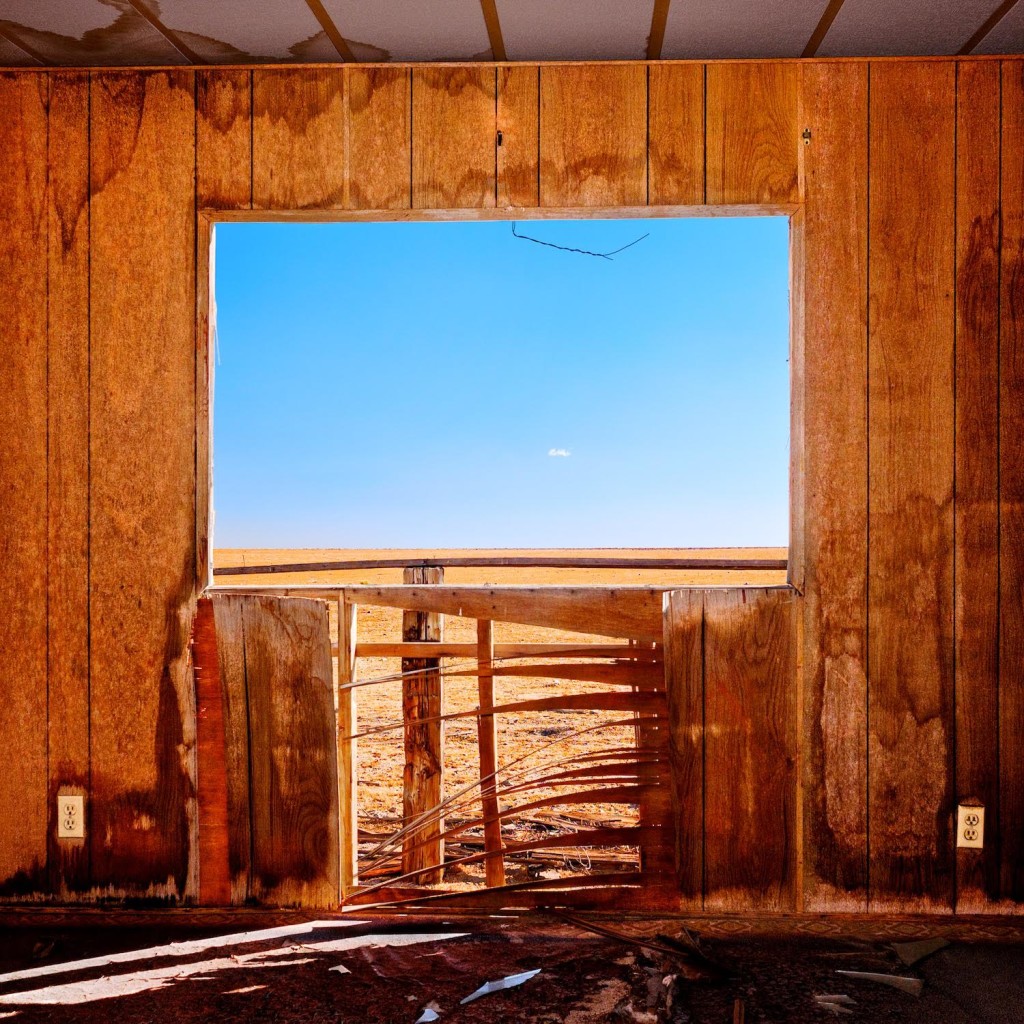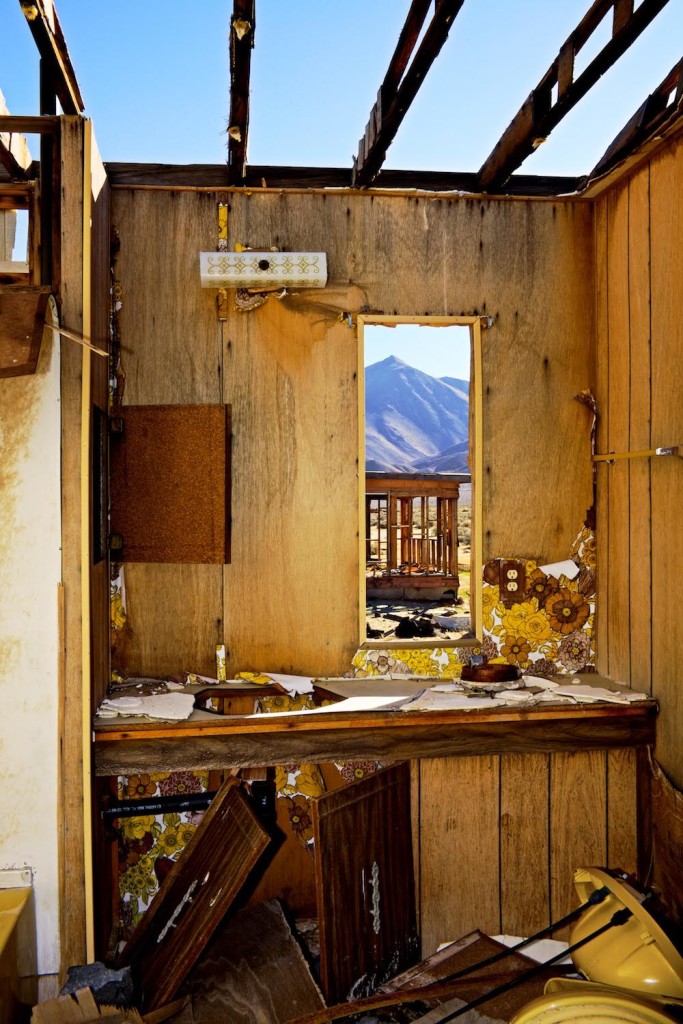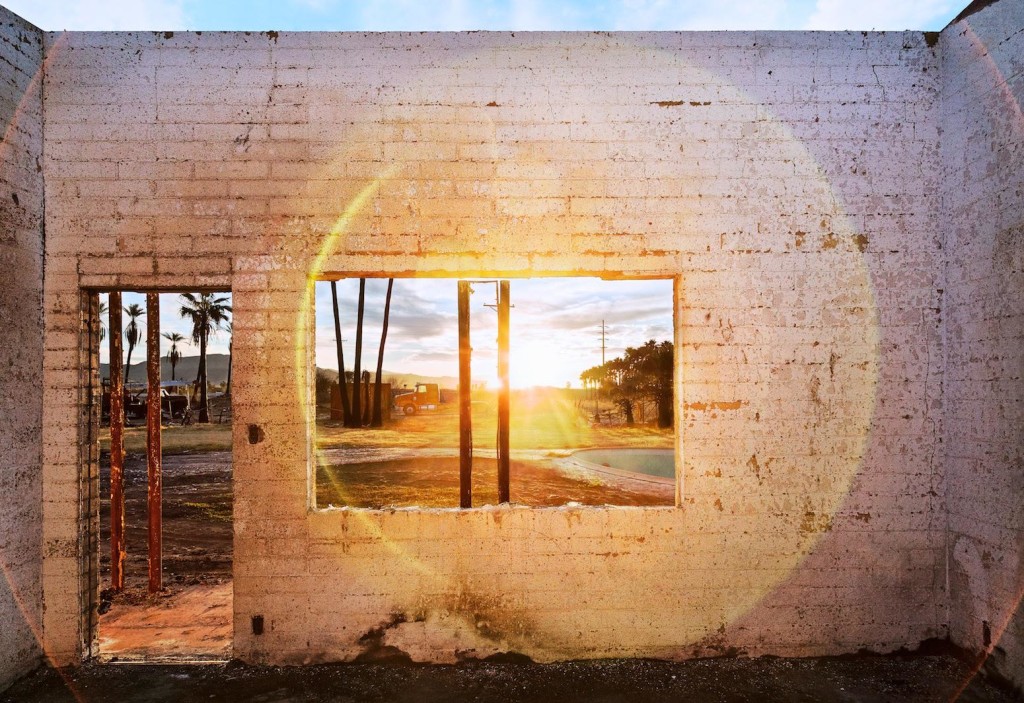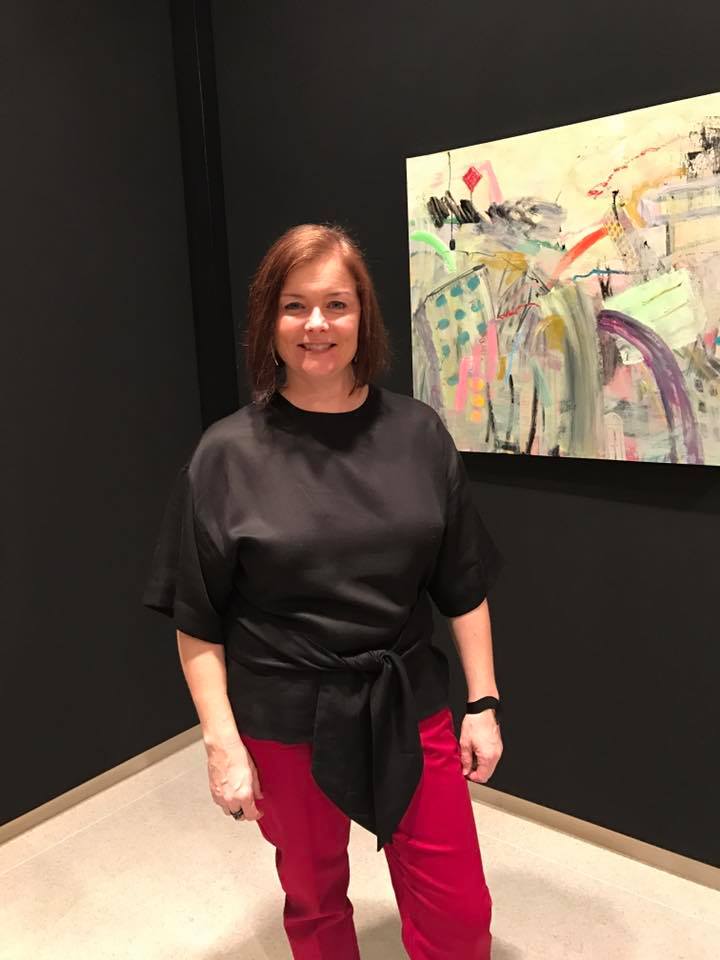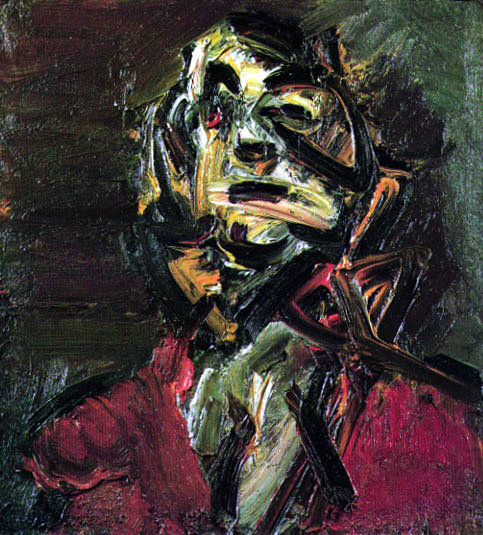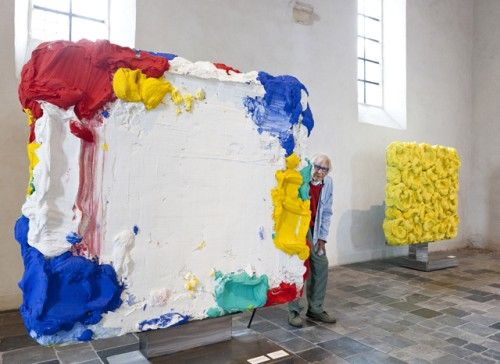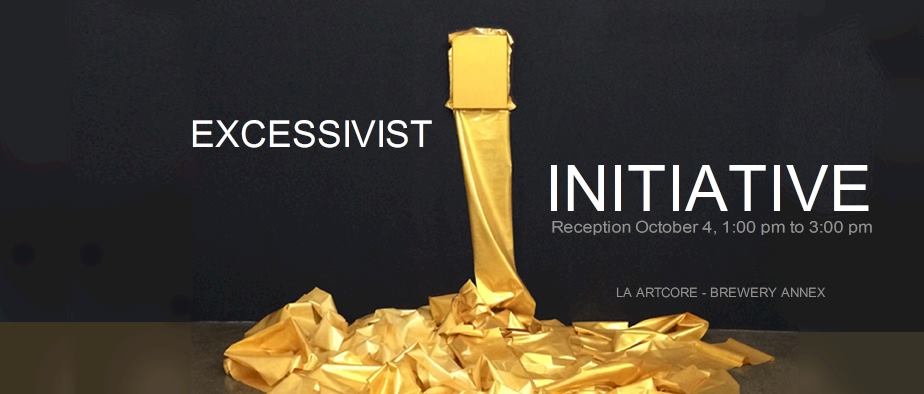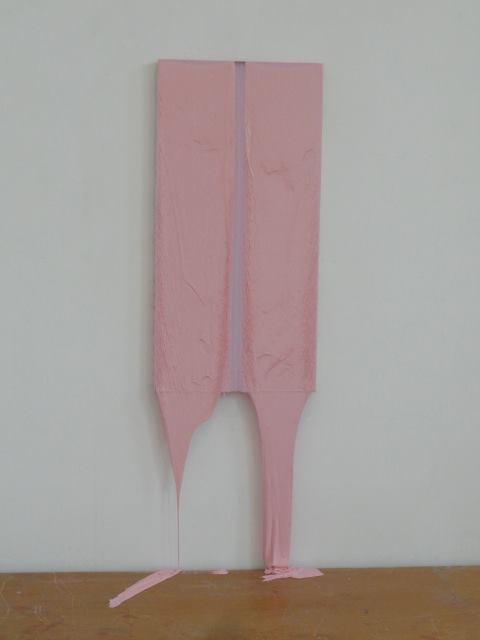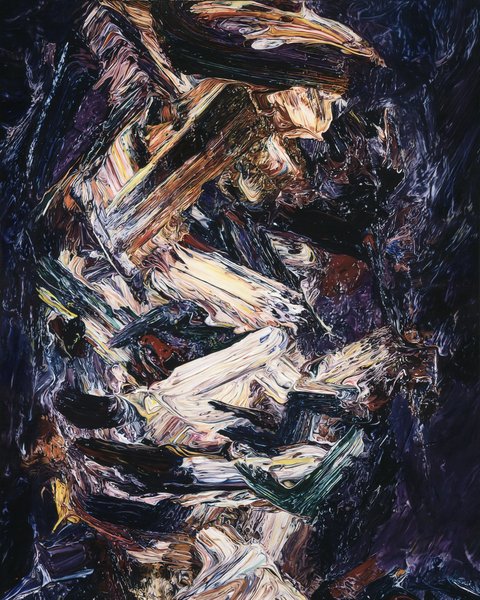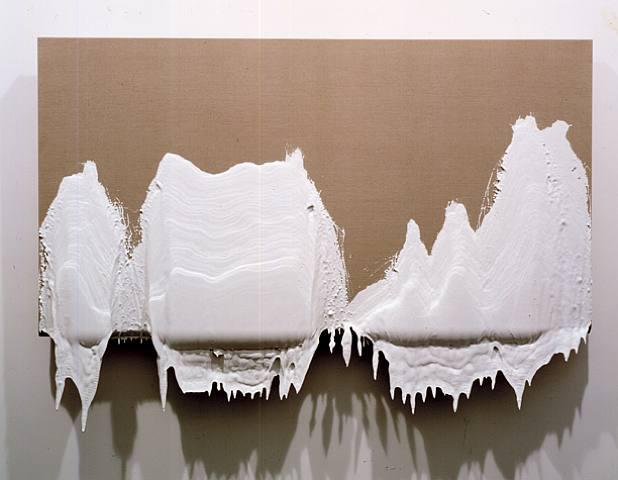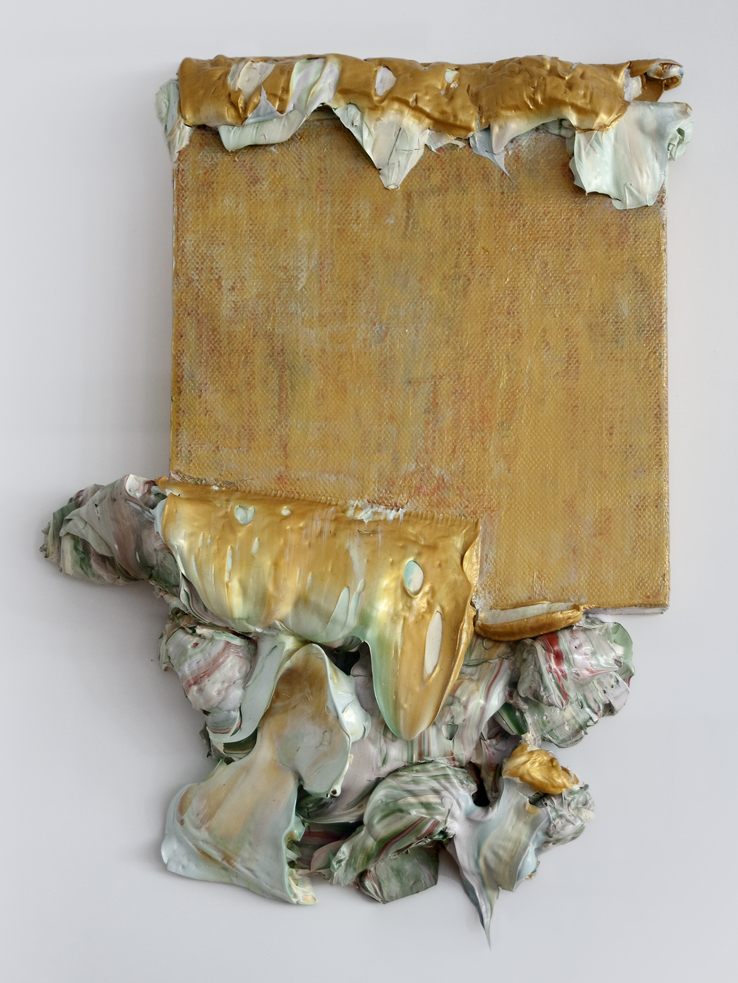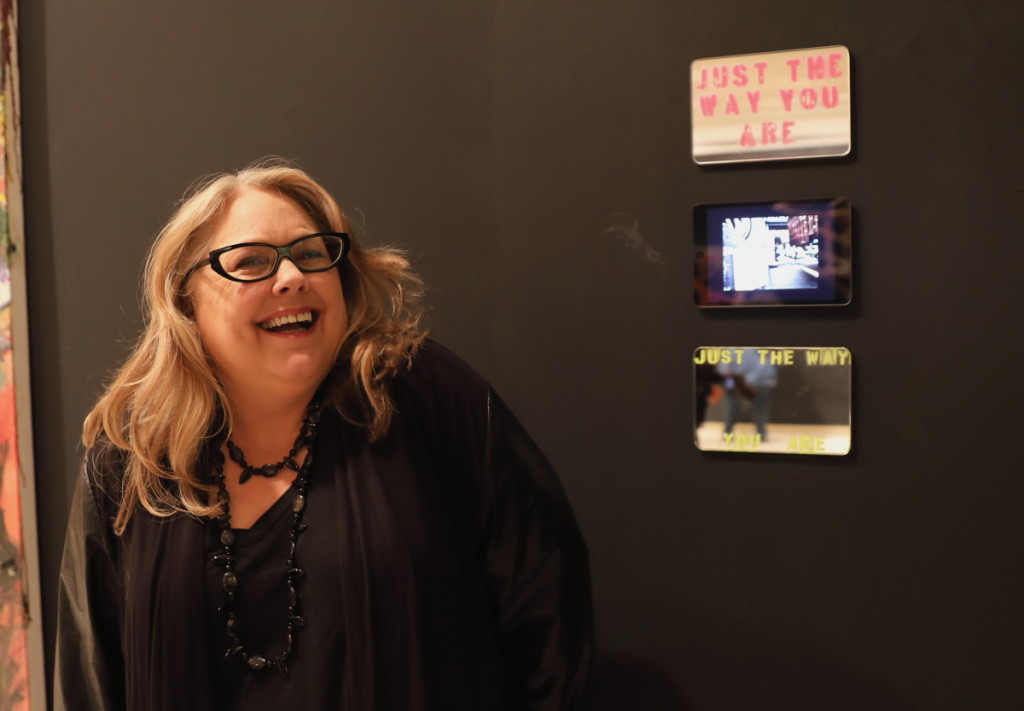
Above, installation artist Dani Dodge with her piece “365.” Dodge notes “LA is a hard town to live in if you’re not a model. I wanted to do something that would give affirmation to people, even if it was only temporary.” To do so she left affirmations everywhere – in the sand, on a straw wrapper, some locations where her “just the way you are” encouragement would be visible for 6 months, other places where it would disappear almost instantly. She posted some affirmations in New York, but primarily Los Angeles was her palette for 365 days worth of documented personal positivity, presented on video here.
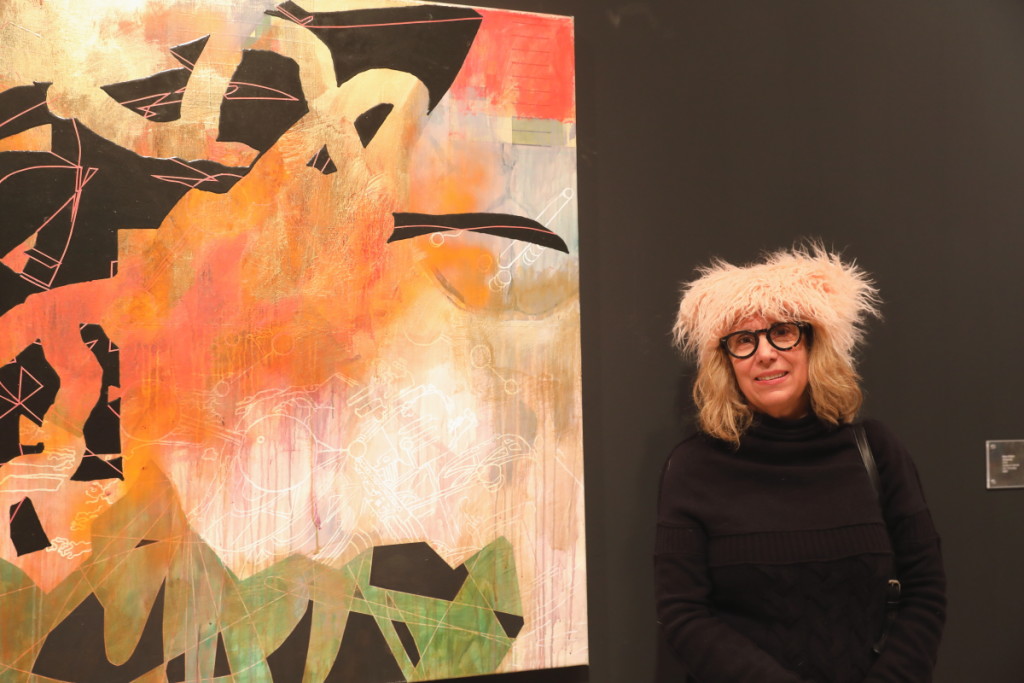
Above, Alison Woods with a glowing work that evokes a mosaic.

Above, David Leapman with “Individual Scent.” He notes “I’ve changed around a precise method of mine using a roller to now use brush work for a whole different feel. I mask to cut out the shapes. It’s a change from the normal way I’m working. ”
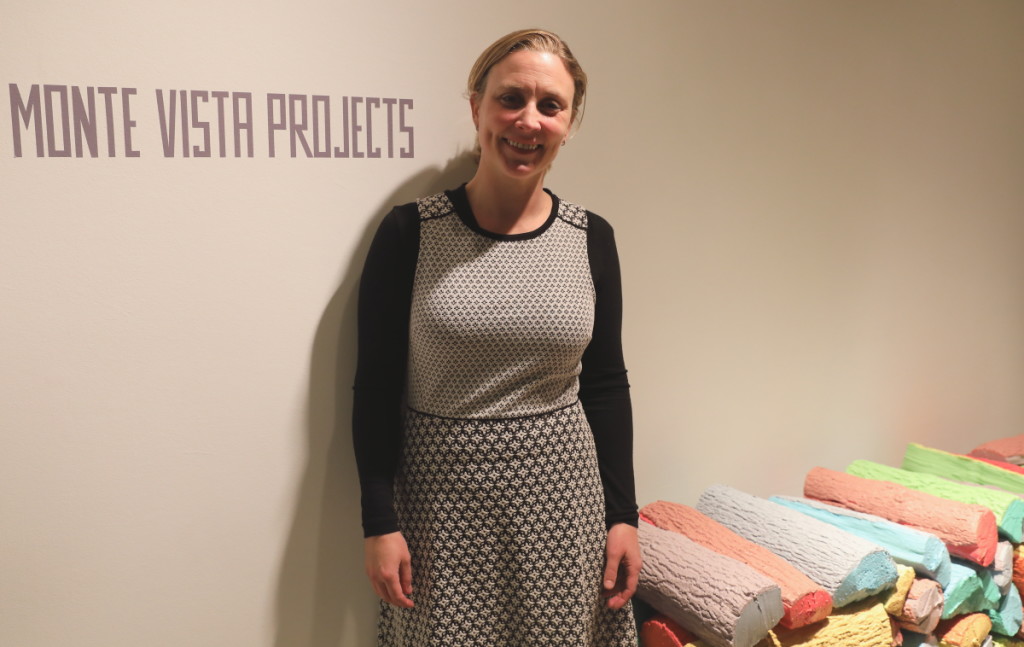
Above and below, Rebecca Bennett Duke with “Over the Rainbow.” Of her work she says “When I was a kid, my dad sold firewood in Vermont, and when my husband and I bought property in Eagle Rock, there was a wood pile. Those were in part the inspiration.” The lightweight cast sculptures are whimsical and wonderful.
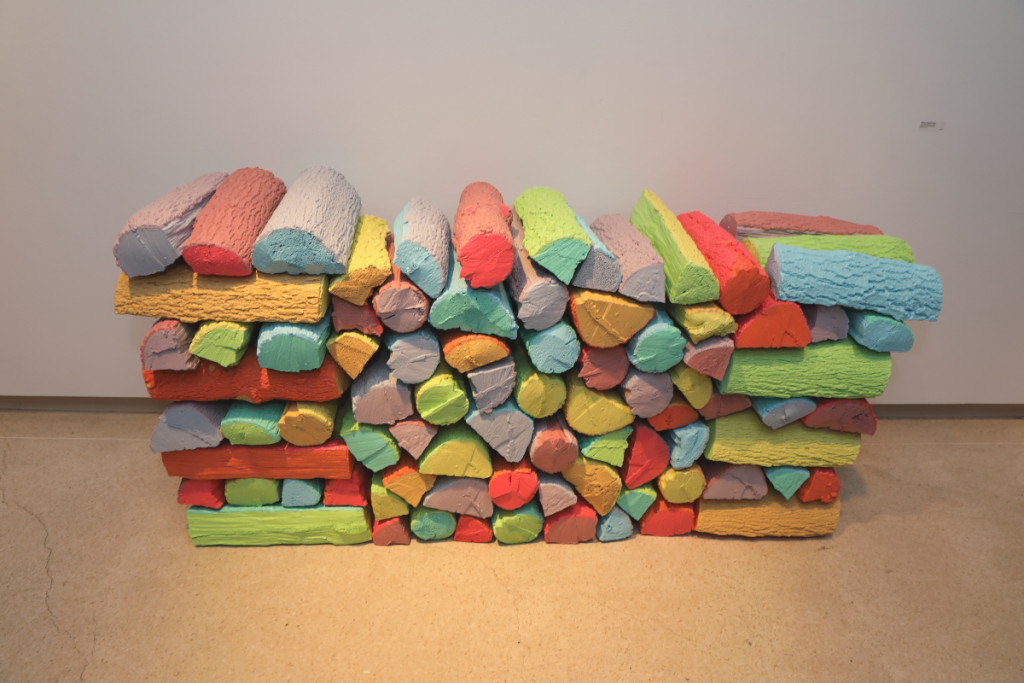
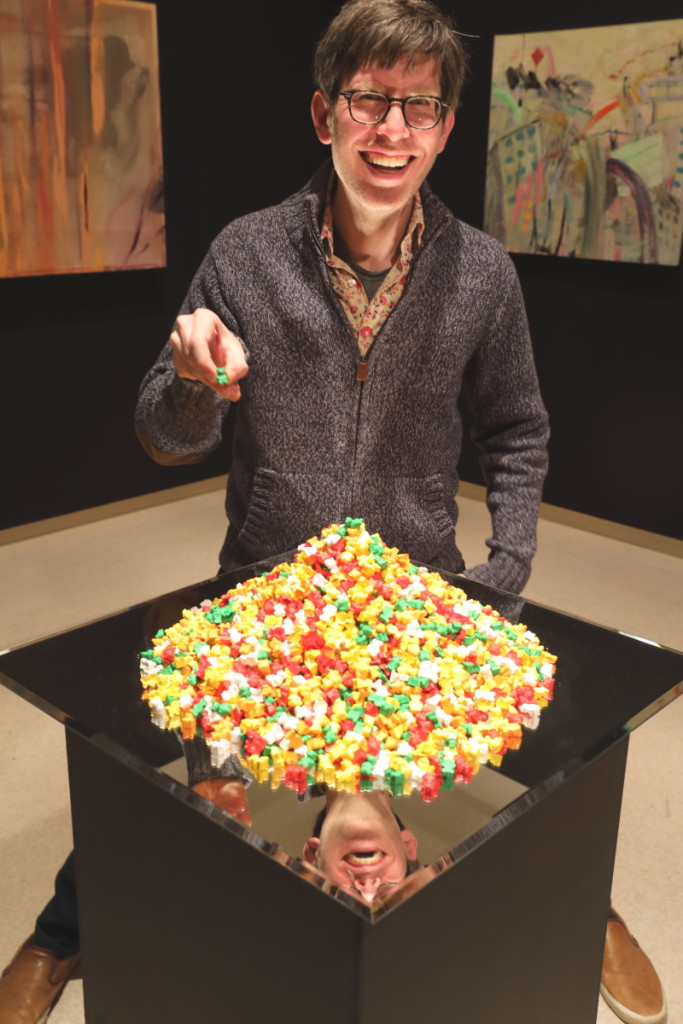
Above, Steven Wolkoff with another lighthearted work, a sculpture created entirely of Behr paint gummy bears. The mirror heightens the effect of a kind of endless, kinetic sorcery.
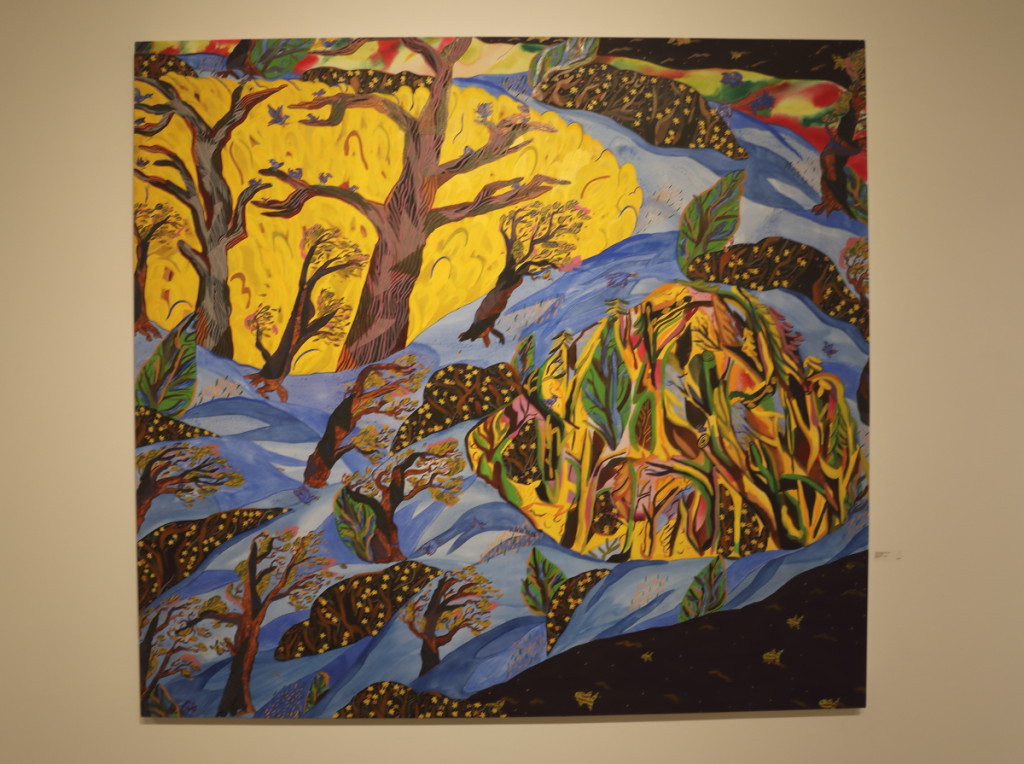
As we explored the exhibition space, we saw both vivid palettes and sculptures that use white the way Midas used gold…
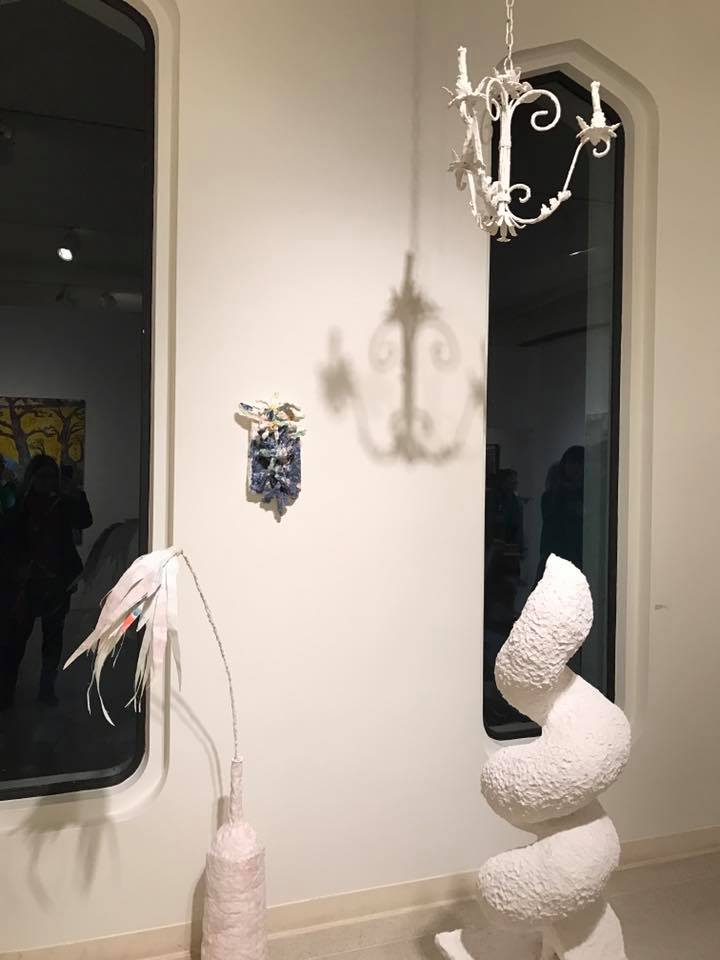

Bold and bright, or dark and mysterious as night…

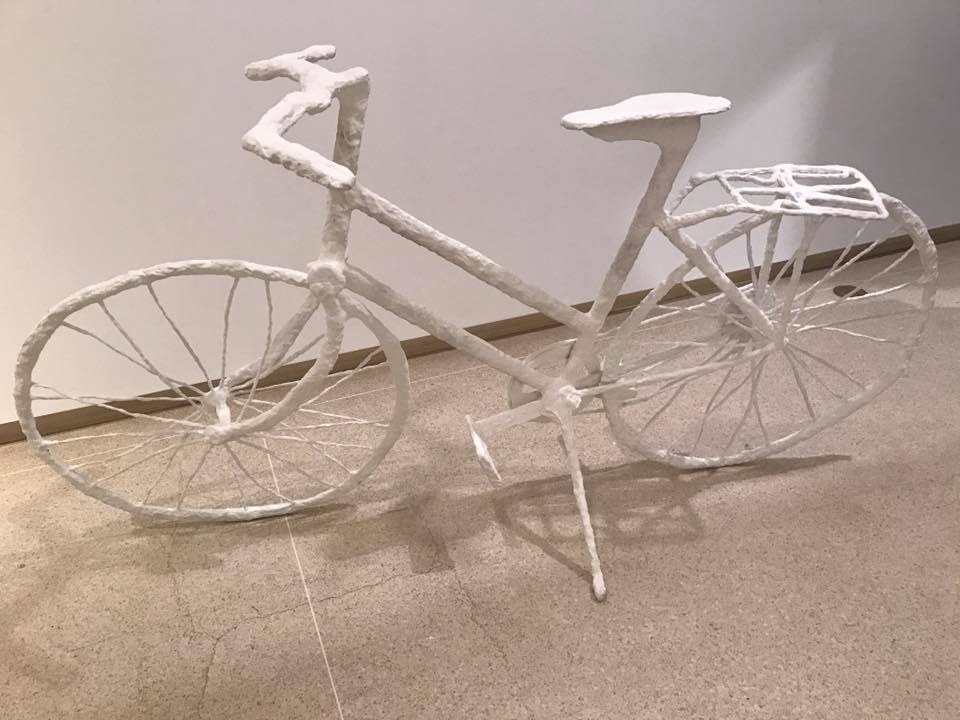
Both playful and edgy…there’s a dream-like quality to many of the works, a light but potent touch of the surreal.

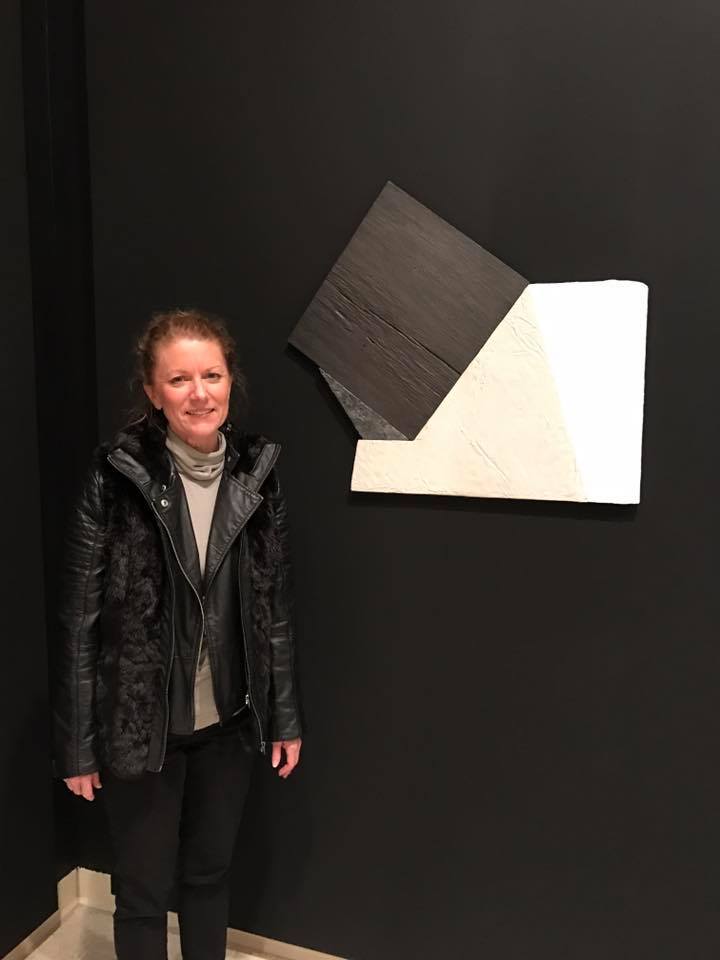
Above, Valerie Wilcox with her “Untitled.” She describes the medium as “Graphite, acrylic, plaster, and foam core on wood. It’s emblematic of lots of my sculptural mixed-media work.” Below, different takes on 3-D art.

Sculptural and mixed media pieces are fluid and thoughtful…

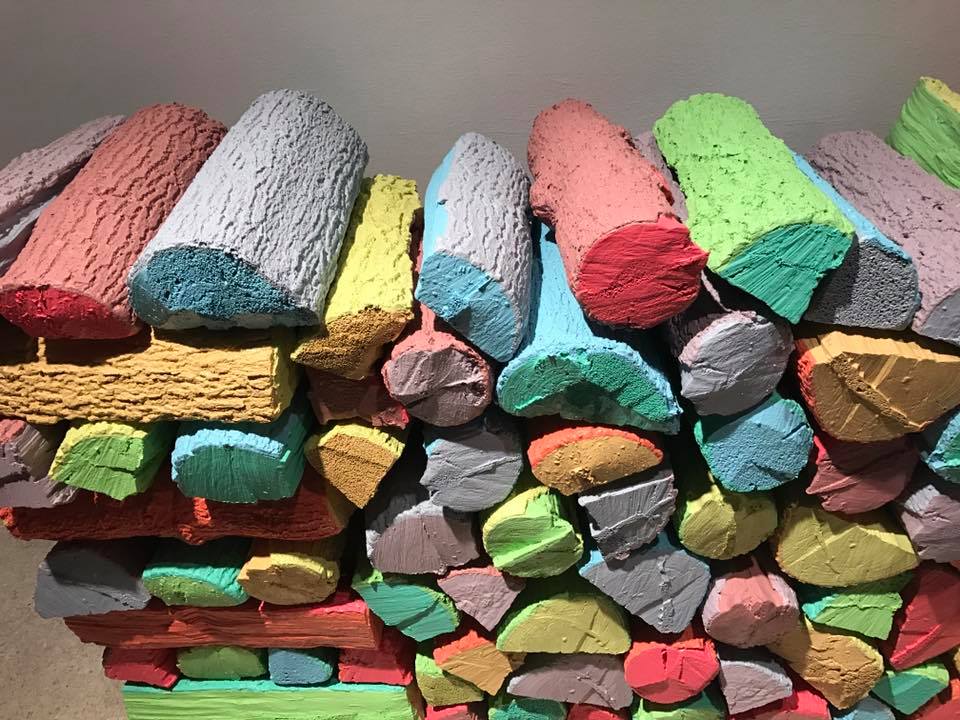
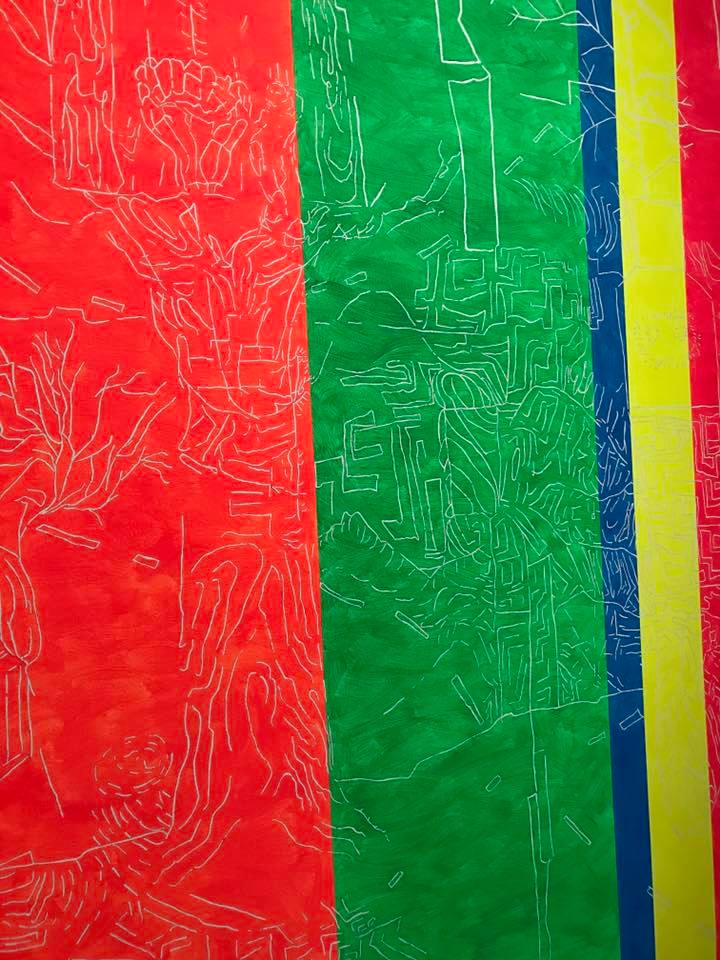

Above, David Spanbock’s work resembles crystals, translucent and exuding light.

The personal and social merge…
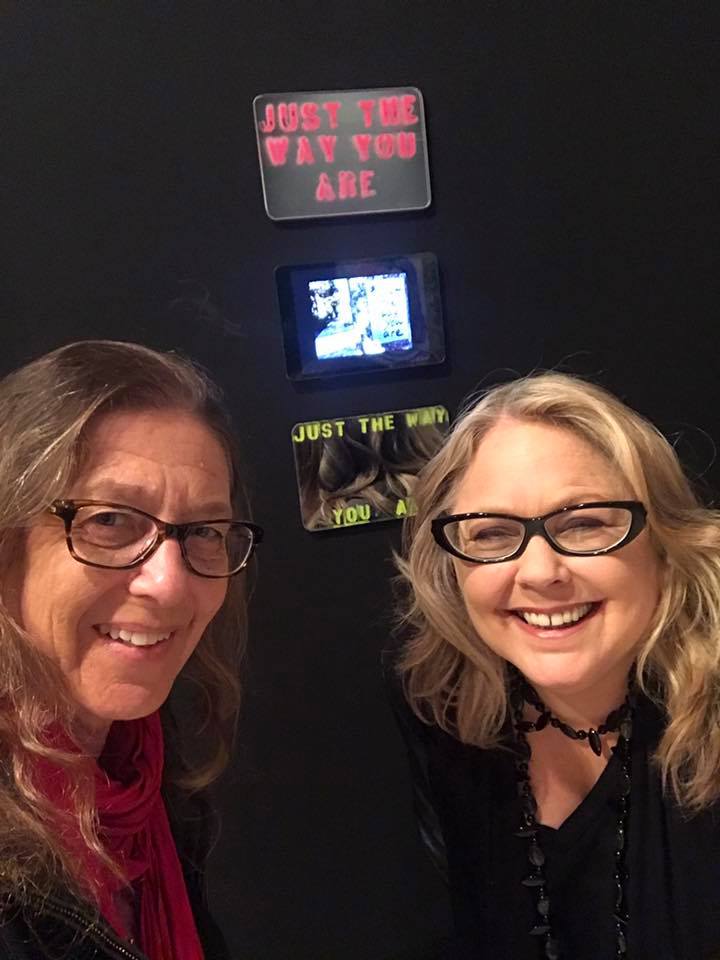
Above, the author with artist Dani Dodge

Above and below, an homage to Prince, “Violet Ghost,” by Rema Ghuloum. “I sand between layers of dry and glazed paint, it builds up very slowly, dense, yet thin.” The effect is that of a stained glass collage.

There’s a lot of glow in this show.


Above, the force behind The Collectivists, Kara Tome and Shannon Currie Holmes.
In short: art is both an individual activity and a collaborative one. It is the support of a community and the power of personal passion. It is innovative, fragile, and always seeking a space in the world. The Collectivists offers that space to present art culled from groups who also offer the support and strength artists need to survive and thrive.
A shout-out to all the artists and collectives participating:
Durden & Ray exhibiting artists: Shiva Aliabadi, Jorin Bossen, Gul Cagin, Sijia Chen, Dani Dodge, Tom Dunn, Lana Duong, Roni Feldman, Jon Flack, Sean Michael Gallagher, Ed Gomez, Jenny Hager, Ben Jackel, Brian Thomas Jones, David Leapman, Alanna Marcelletti, Chris Mercier, Ty Powell, Max Presneill, Nano Rubio, David Spanbock, Curtis Stage, Jesse Standlea, Steven Wolkoff and Alison Woods.
Eastside International (ESXLA) exhibiting artists: Sarah Burwash, Bruce Ingram, Robin Tarbet, Stacy Wendt, Min Wong.
Manual History Machines exhibiting artists: Andrea Marie Breiling, Daniela Campins, Rema Ghuloum, Michelle Carla Handel, Bessie Kunath, Jill Spector, Tessie Salcido Whitmore and Suné Woods.
Monte Vista Projects exhibiting artists: Rebecca Bennett Duke, Michael Lewis Dodge, Danny Escalante, Roberta Gentry, Melissa Huddleston, Jay Lizo and Chris Miller.
Tiger Strikes Asteroid exhibiting artists: (from TSA Los Angeles) Carl Baratta, Vanessa Chow, Erin Harmon, Brittany Mojo, Liz Nurenberg, Brian Porray, Jonathan Matthew Ryan, Laurel Shear, Christopher Ulivo, (from TSA New York) Alex Paik and Andrew Prayzner, (from TSA Philadelphia) Mark Brosseau, Megan Biddle, (from TSA Chicago) Zachary Cahill, Michelle Wasson.
Association of Hysteric Curators exhibiting artists: Mary Anna Pomonis and Allison Stewart.
The Collectivists will runs through March 12 at the Brand Library & Art Center, 1601 W. Mountain St, Glendale.




